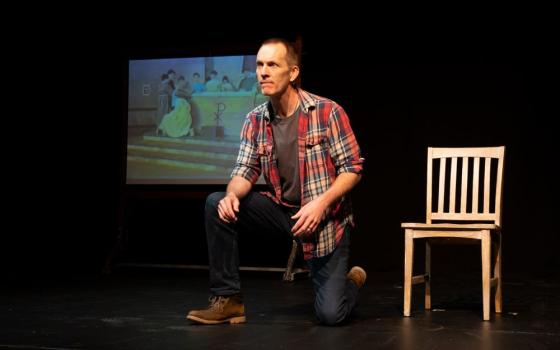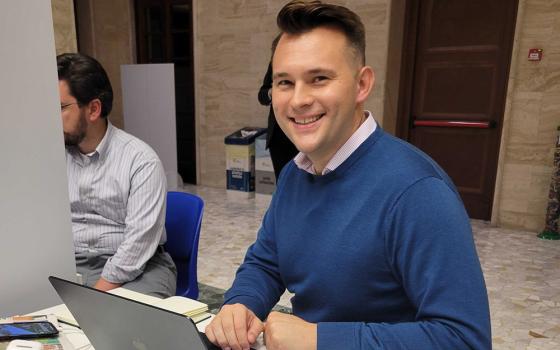By JOHN L. ALLEN JR.
Rome
In the latest chapter of the Vatican’s attempt to come to grips with the sexual abuse crisis, the Congregation for the Doctrine of the Faith is expected to release a set of changes to the church’s rules for meting out ecclesiastical discipline against abuser priests sometime in the next few days.
Vatican sources caution, however, that the revisions are largely a matter of consolidating existing practice, rather than a dramatic new approach to how sex abuse cases are handled.
------------------------------------------------------------------------------
There has been one update to this story: Vatican to heighten women's ordination sin level
------------------------------------------------------------------------------
Sources also stress that the revisions affect only the internal ecclesiastical status of an accused priest. In a separate set of guidelines published in April, the Vatican said that civil law regarding reporting crimes of sexual abuse of a minor to the police and other authorities should always be followed.
The church’s current law in sex abuse cases was laid out in a 2001 document, known as a motu proprio, meaning under the pope’s personal authority, from Pope John Paul II, titled Sacramentorum sanctitatis tutela. Sources say the new revisions will codify exceptions to that motu proprio secured by then-Cardinal Joseph Ratzinger, now Pope Benedict XVI, in February 2003.
Those exceptions, known as “special faculties,” generally had the effect of streamlining church procedures for weeding abusers out of the priesthood.
Yet sources say the revisions also contain two new wrinkles: They extend the statute of limitations in canon law, known as prescription, for bringing a charge of sexual abuse of a minor from ten years from the victim’s eighteenth birthday to twenty. For the first time, the revisions also identify child pornography as a “grave offense” subject to the doctrinal congregation.
In practice, the extension of the statute of limitations is not likely to have a dramatic effect, given that the doctrinal congregation already has authority to set it aside on a case-by-case basis. To date they’ve done so in the bulk of cases they’ve faced.
The Congregation for the Doctrine of the Faith is also said to be working on a separate document, styled more as “guidance” rather than binding law, which will address how bishops and bishops’ conferences around the world can better coordinate the various directives on sexual abuse issued by national conferences of bishops.
The lack of a uniform global policy on abuse has long been a central bone of contention for critics, who point to episodes in the United States, for example, where foreign priests accused of abuse returned to their home countries and escaped the tough “one strike” policy of the American church.
Sources say that while the revisions to the motu proprio are ready, the guidance for bishops’ conferences is still under consideration and will not appear in the near future.
Sources told NCR that there are no present plans for a press conference or briefing by Cardinal William Levada, the American who heads the Congregation for the Doctrine of the Faith, or other officials of the congregation, when the revisions are published.
Vatican insiders have long pointed to the special faculties as an example of Ratzinger’s commitment to resolving the sexual abuse crisis.
When John Paul’s motu proprio was issued in 2001, it generated concern among some bishops and canon lawyers, especially in the United States, who read it to mean that virtually every charge of sexual abuse had to be handled through a canonical trial, which many regarded as cumbersome, expensive, and uncertain. The norms also required that the key personnel in those trials be priests, even though many of the church’s canonists in America are laity. The statue of limitations in canon law also seemed to bar action in many cases.
That criticism came to a head in early 2003, when the promoter of justice in the doctrinal congregation, effectively its chief prosecutor, Maltese Monsignor Charles Scicluna, was set to travel to the United States to brief American canonists on how the norms laid out in Sacramentorum sanctitatis tutela were to be followed. Just ahead of Scicluna’s departure, Ratzinger secured a set of special faculties from John Paul II intended to address the most serious concerns about the motu proprio.
In addition to permission to waive the statute of limitations, the special faculties also:
•tAllows one judge on a church tribunal to be a lay person, and eliminates the requirement of a doctorate in canon law;
•tAllows for by-passing trials in especially grave cases, removing abuser priests on the basis of a decree;
•tGives the doctrinal congregation power to “sanate” the acts of lower courts, meaning to clean up any procedural irregularities;
•tEstablishes that an appeal in abuse cases goes to the doctrinal congregation rather than the Signatura, the Vatican’s highest court.
Those faculties have been in force since 2003, though with the status of exceptions to church law. The coming revisions are expected to make the substance of most of these points formally a part of the law.




